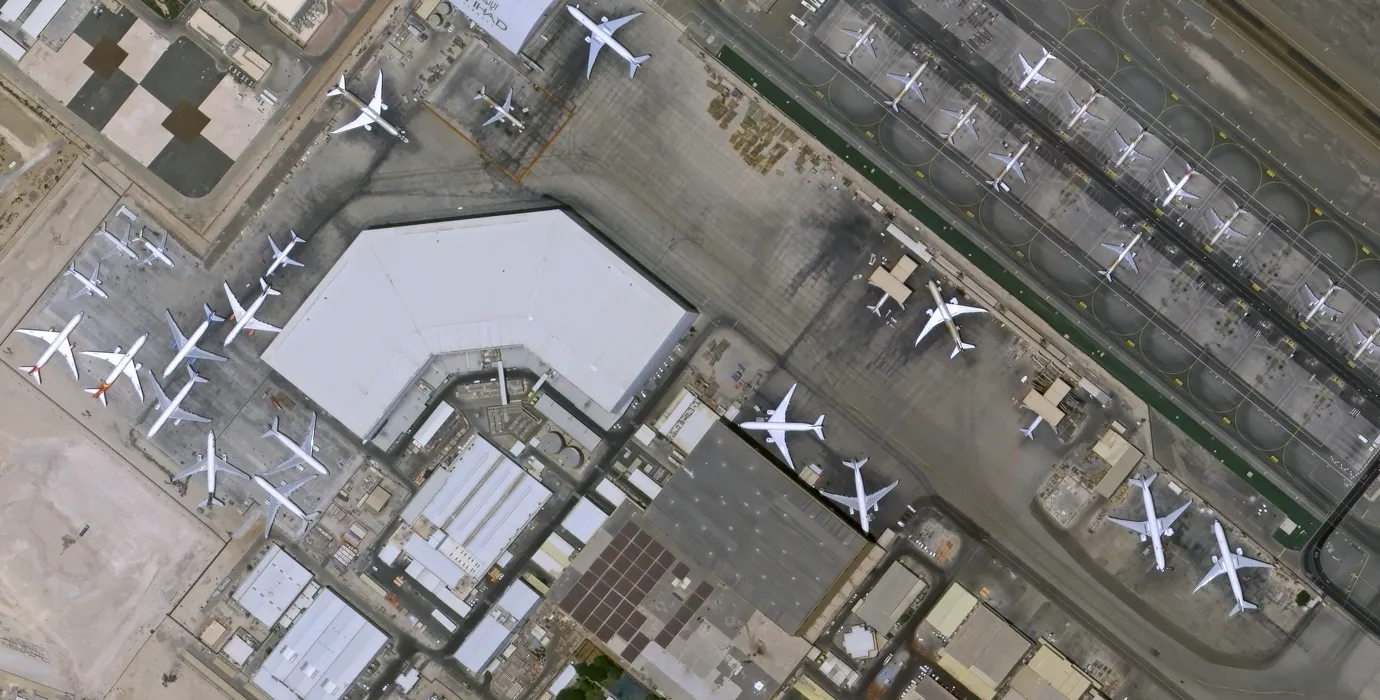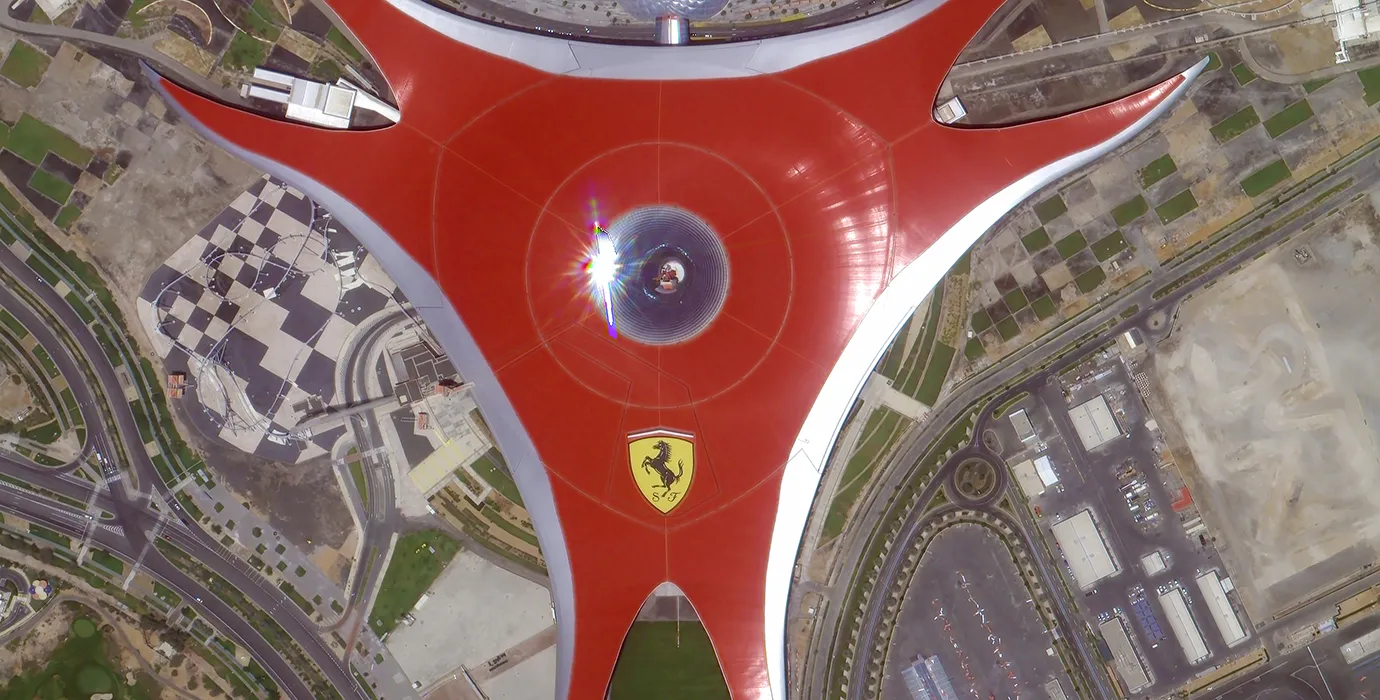Dr. Lena Hoffman
Director of Research, Arctic Climate Lab, Germany

أقمار صناعية من سلسلة GF بدقة 0.5 متر
تفاصيل المنتجات
GF series satellites with a resolution of 0.5m have the functions of independent on-satellite mission planning, real-time data transmission and on-satellite AI. Combined with fast maneuvering control, single-orbit multi-point target imaging and fast information return can be realized. The satellite can capture static push-broom images with a resolution of 0.5m and a breadth better than 15km, and has the characteristics of high resolution, high integration and intelligence.
Jilin-1GF 04A
|
اسم |
Jilin-1GF 04A |
|
maging mode |
Push-broom imaging |
|
دقة |
Full color: 0.5m |
|
Spectral Coverage |
Panchromatic color:450nm~700nm Multispectral:Blue:450nm~510nm Green:510nm~580nm Red:630nm~690nm Near-infrared:770nm~895nm |
|
عرض المسار (عند أدنى نقطة) |
15km |
|
وزن |
≈90kg |


Please send technical details and pricing.
اتصل بناThe ideal resolution for satellite hyperspectral imaging depends heavily on the application. In general, most commercial hyperspectral satellites offer spatial resolutions between 2 and 5 meters, which are sufficient for broad environmental monitoring, mineral mapping, and agricultural analysis. However, when tasks require detailed observation—such as urban analysis, precision farming, or target detection—higher resolution becomes essential. That's where high-resolution sensors capturing at 70 cm, 50 cm, or even 30 cm prove to be a game changer.
Hyperspectral imaging involves collecting data across hundreds of narrow spectral bands. Each band offers a unique "fingerprint" of the material being observed—be it soil, vegetation, water bodies, or man-made structures. When combined with high spatial resolution, the result is a powerful tool that delivers both the spectral depth and the geometric detail required to distinguish between extremely similar surface materials. For instance, a 0.5 m resolution satellite image might differentiate between types of crops in adjacent rows, or between roofing materials on buildings—an impossible feat with coarser 5 m resolution imagery.
Each jump in resolution represents more than just clearer visuals—it leads to an exponential increase in the volume of data per pixel. A finer resolution means that smaller ground areas are covered per pixel, which in turn increases the number of pixels for the same area. This results in more precise classification, improved anomaly detection, and better-informed decision-making. Of course, this also demands stronger satellite connectivity and satellite communication services to handle the sheer volume of data generated and to transmit it efficiently back to Earth. This is where VSAT communication systems and خدمات دعم الأقمار الصناعية come into play, especially in remote sensing applications that need real-time or near-real-time processing.
While lower-resolution hyperspectral systems are adequate for regional overviews, modern industries—especially those involving تصنيع المعدات الراقية, precision land management, and defense—require a combination of spectral accuracy and sub-meter spatial clarity. Therefore, platforms offering 0.5 m resolution satellite images stand at the forefront of the future of hyperspectral Earth observation, combining analytical richness with spatial precision.
For organizations seeking state-of-the-art hyperspectral capabilities with sub-meter imaging, considering satellite solutions from providers like SpaceNavi Co., Ltd., which offer high-resolution satellite platforms capable of supporting next-generation data needs.
In regions with limited fiber or mobile coverage, satellite connectivity becomes the only reliable option for internet and data services. It by passes terrestrial infrastructure completely, delivering coverage over mountains, oceans, and deserts. Remote mining operations, oil rigs, and scientific expeditions increasingly depend on satellite network connection to stay linked with their headquarters and logistics centers.
What makes modern connectivity even more practical is the availability of compact equipment like a small satellite dish, which can be installed in remote locations and used to send or receive large volumes of data. Combined with a platform offering 0.5 m resolution satellite images, businesses can collect real-time earth observation data and share it instantly for fast decision-making.
As traditional networks fall short in remote applications, it’s wise to work with satellite service providers who offer end-to-end support—from satellite data to infrastructure. In this regard, SpaceNavi Co., Ltd. offers highly efficient platforms designed to work seamlessly with modern satellite connectivity solutions.
When navigating the world of satellite communications, two terms often come up: Satcom and VSAT. While both are key technologies for global connectivity, especially in remote or infrastructure-challenged environments, they serve slightly different roles and have distinct technical characteristics. Understanding the practical differences between the two can help businesses, defense agencies, and tech providers make better infrastructure decisions—especially when performance, deployment speed, and mobility are critical factors.
VSAT, short for Very Small Aperture Terminal, refers to a ground-based two-way satellite communication system that typically uses a small satellite dish between 0.6 and 2.4 meters in diameter. It operates in high-frequency bands like Ku or Ka, allowing for high bandwidth and fast data transmission. This makes VSAT communication particularly useful for internet access, video conferencing, banking networks, and even rural education systems. Because the dish is relatively small and lightweight, VSAT is often favored for quick deployment in temporary locations—whether it’s for an oil exploration site, remote medical clinic, or a pop-up emergency response hub.
On the other hand, Satcom—short for Satellite Communications—is a broader term that refers to all satellite-based communication systems, including VSAT, but also larger, more powerful systems that operate over a wide range of frequencies, including C band and L band. Traditional Satcom antennas are often bigger, mounted on trailers, ships, or aircrafts, and offer superior stability and range. These systems are commonly used in military operations, aviation, and broadcast media, where uninterrupted service and global coverage are more important than portability. Technologies like orbit satcom are specifically used in systems operating at geostationary or low earth orbits to ensure long-term, uninterrupted data relays.
One critical distinction lies in technical requirements. VSAT systems require less power, smaller equipment, and are easier to install. Satcom, in contrast, involves more complex integration, often tied to dedicated infrastructure and higher-cost maintenance. However, Satcom systems deliver extremely stable, wide-area coverage, making them essential for long-haul and high-security communications. For instance, in satcom for UAV operations, where drones must stay connected over large, rural or oceanic distances, Satcom’s reliability and extensive frequency coverage make it a better fit than VSAT. Today, advances in satcom technology are closing the gap between mobility and power. Modern systems are becoming lighter and more modular, allowing better performance even in portable or dynamic platforms. However, VSAT continues to dominate in commercial and humanitarian use cases due to its cost-effectiveness and ease of deployment. For those needing a quick setup for satellite internet, VSAT is usually the preferred communication system satellite solution. But for entities needing wide-range, high-stability communication—such as replacing a Starlink network setup with a more secure and enterprise-ready alternative—traditional Satcom might be more appropriate.
Ultimately, the decision between VSAT and Satcom depends on your application. Need a fast, deployable system for a rural healthcare project or mining operation? VSAT has your back. Operating UAV fleets over national borders or managing critical maritime communications? Go with Satcom. In both cases, choosing a reliable satellite communication company is key to ensuring consistent performance. For businesses and organizations looking to deploy high-performance communication systems, we recommend consulting satellite experts like SpaceNavi Co., Ltd. With experience across both VSAT communication and full-scale satcom technology, they provide adaptable solutions for everything from disaster recovery to aerospace. Whether you're building your first orbit satcom setup or upgrading from a Starlink network, having a strategic partner in satellite deployment is critical to long-term success.
In emergency situations such as natural disasters, time is everything. 0.5 m resolution satellite images allow responders to assess damage, plan rescue routes, and allocate resources with speed and accuracy. This level of resolution reveals obstacles like collapsed bridges, flooded roads, or blocked supply paths that wouldn’t be visible on lower-resolution maps.
To make this data actionable, emergency teams rely heavily on satellite communication services that can deliver imagery to mobile command units in real time. These services typically operate via VSAT communication, with small satellite dish terminals that are easily deployable in the field. Instant access to high-resolution maps allows for faster and more effective response strategies.
Many governments and NGOs prefer working with satellite support services that provide both imaging and communications capabilities. For organizations looking for a comprehensive solution, we suggest partnering with SpaceNavi Co., Ltd., which supports emergency response operations through its agile satellite platforms and rapid data delivery.

Dr. Lena Hoffman
Director of Research, Arctic Climate Lab, Germany

Miriam Jansen
Wildlife Conservation Officer, South Africa

Richard Nwosu
Urban Planning Consultant, Nigeria

Fatima Said
Water Resource Planner, Morocco



